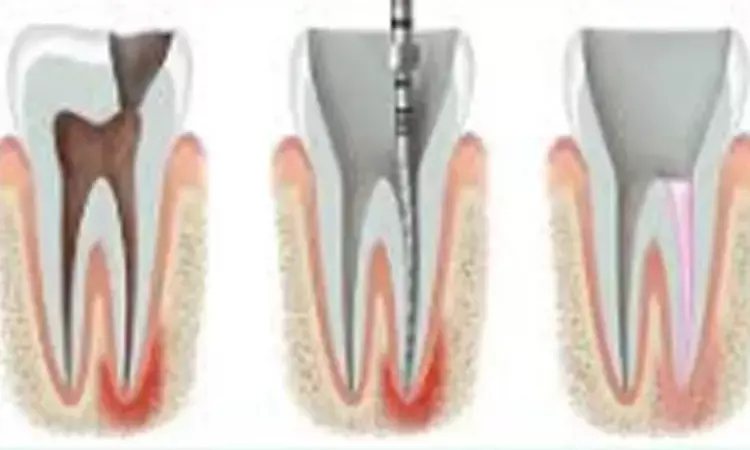- Home
- Medical news & Guidelines
- Anesthesiology
- Cardiology and CTVS
- Critical Care
- Dentistry
- Dermatology
- Diabetes and Endocrinology
- ENT
- Gastroenterology
- Medicine
- Nephrology
- Neurology
- Obstretics-Gynaecology
- Oncology
- Ophthalmology
- Orthopaedics
- Pediatrics-Neonatology
- Psychiatry
- Pulmonology
- Radiology
- Surgery
- Urology
- Laboratory Medicine
- Diet
- Nursing
- Paramedical
- Physiotherapy
- Health news
- Fact Check
- Bone Health Fact Check
- Brain Health Fact Check
- Cancer Related Fact Check
- Child Care Fact Check
- Dental and oral health fact check
- Diabetes and metabolic health fact check
- Diet and Nutrition Fact Check
- Eye and ENT Care Fact Check
- Fitness fact check
- Gut health fact check
- Heart health fact check
- Kidney health fact check
- Medical education fact check
- Men's health fact check
- Respiratory fact check
- Skin and hair care fact check
- Vaccine and Immunization fact check
- Women's health fact check
- AYUSH
- State News
- Andaman and Nicobar Islands
- Andhra Pradesh
- Arunachal Pradesh
- Assam
- Bihar
- Chandigarh
- Chattisgarh
- Dadra and Nagar Haveli
- Daman and Diu
- Delhi
- Goa
- Gujarat
- Haryana
- Himachal Pradesh
- Jammu & Kashmir
- Jharkhand
- Karnataka
- Kerala
- Ladakh
- Lakshadweep
- Madhya Pradesh
- Maharashtra
- Manipur
- Meghalaya
- Mizoram
- Nagaland
- Odisha
- Puducherry
- Punjab
- Rajasthan
- Sikkim
- Tamil Nadu
- Telangana
- Tripura
- Uttar Pradesh
- Uttrakhand
- West Bengal
- Medical Education
- Industry
Root canal treatment work still favored for badly damaged teeth

Few patients regret having a severely damaged tooth saved by a root canal filling. A University of Gothenburg thesis shows that 87 percent would choose the same treatment again, if in need, although pain and discomfort around the tooth are common.
The reason for getting a root filling is often that the soft tissue inside the tooth, the dental pulp, is inflamed or infected. The root canal treatment is carried out in stages, on several occasions. Soft parts are removed and the root canals are finally filled with a combination of a natural, rubberlike material (gutta-percha) and a kind of cement.
Despite generally good oral health, root canal treatment is still a common and necessary measure. In Sweden, as in most countries, most root canal treatments are performed by general dental practitioners in the public or private sector.
For her PhD thesis, dentist Emma Wigsten of the Institute of Odontology at Sahlgrenska Academy, University of Gothenburg, studied various aspects of root canal treatments performed in Swedish general dental practice, with the Public Dental Service in Region Västra Götaland as a base.
Molars difficult to treat
In several of the component studies in Wigsten's compilation thesis, data on a patient group initially numbering 243 were analyzed. They had all started root canal treatment at one of the 20 public dental clinics in the region. The patients were then followed up for one to three years.
Most of the root canal treatments studied were prompted by toothache in teeth with caries and large restorations, which culminated in root fillings within a year. Molars were an exception: only just over half of the root fillings met their purpose and, as a result, many molars had to be removed (i.e. extracted).
"It seems harder to get a good result in treating the molars, despite time and resources invested. Root canal treatment is complicated: You're working inside the tooth where you can't see anything, and the further back you go in the mouth, the more difficult it becomes," Wigsten says.
"Root canal treatments of molars involve significantly bigger challenges than other tooth groups. So it may be important to investigate whether root canal treatments of molars should be performed to a greater extent by dentists specializing in root canal treatment."
Satisfaction and quality of life
Half of the patients stated that they had mild pain or discomfort from their root-filled tooth during the follow-up period of up to three years. Nevertheless, the great majority (87 percent) were satisfied. They did not regret their choice to get root canal treatment instead of a tooth extraction.
Another component study, at six public dental clinics in Region Västra Götaland, covered 85 patients in whom either root canal treatment was started or a tooth was removed. An improved health-related quality of life was observed in the patients who started root canal treatment, but not in those who underwent a tooth extraction.
"The studies show that the patients' quality of life benefited from root canal treatment. On the other hand, it's unclear whether the treatment is cost-effective compared with tooth removal, especially where molars are concerned," Wigsten concludes.
Hina Zahid Joined Medical Dialogue in 2017 with a passion to work as a Reporter. She coordinates with various national and international journals and association and covers all the stories related to Medical guidelines, Medical Journals, rare medical surgeries as well as all the updates in the medical field. Email: editorial@medicaldialogues.in. Contact no. 011-43720751
Dr Kamal Kant Kohli-MBBS, DTCD- a chest specialist with more than 30 years of practice and a flair for writing clinical articles, Dr Kamal Kant Kohli joined Medical Dialogues as a Chief Editor of Medical News. Besides writing articles, as an editor, he proofreads and verifies all the medical content published on Medical Dialogues including those coming from journals, studies,medical conferences,guidelines etc. Email: drkohli@medicaldialogues.in. Contact no. 011-43720751


